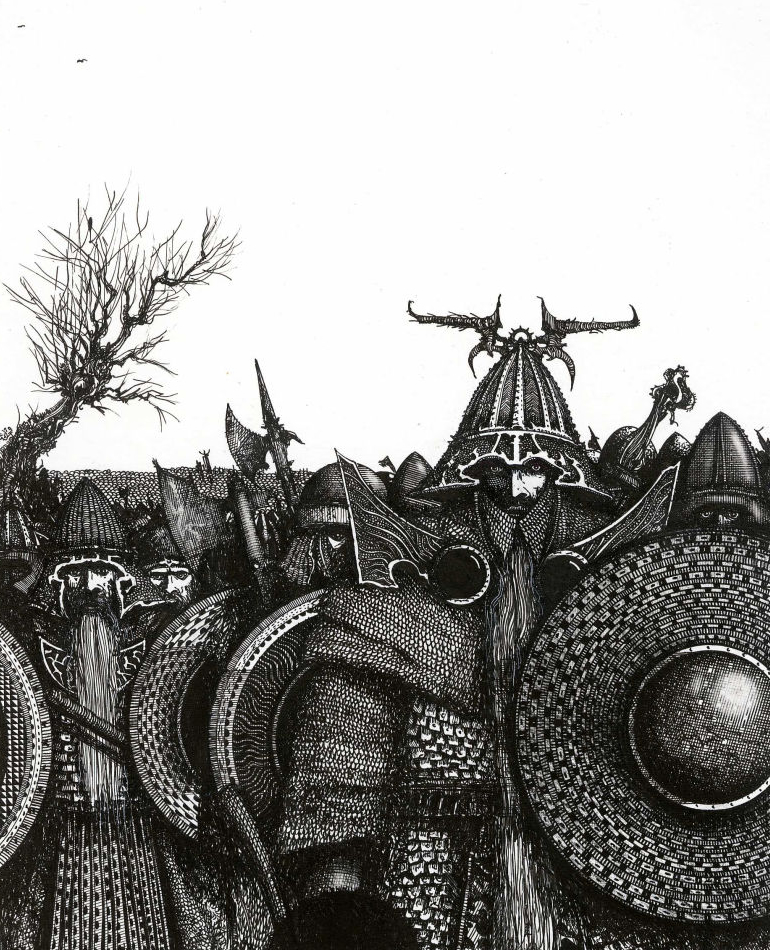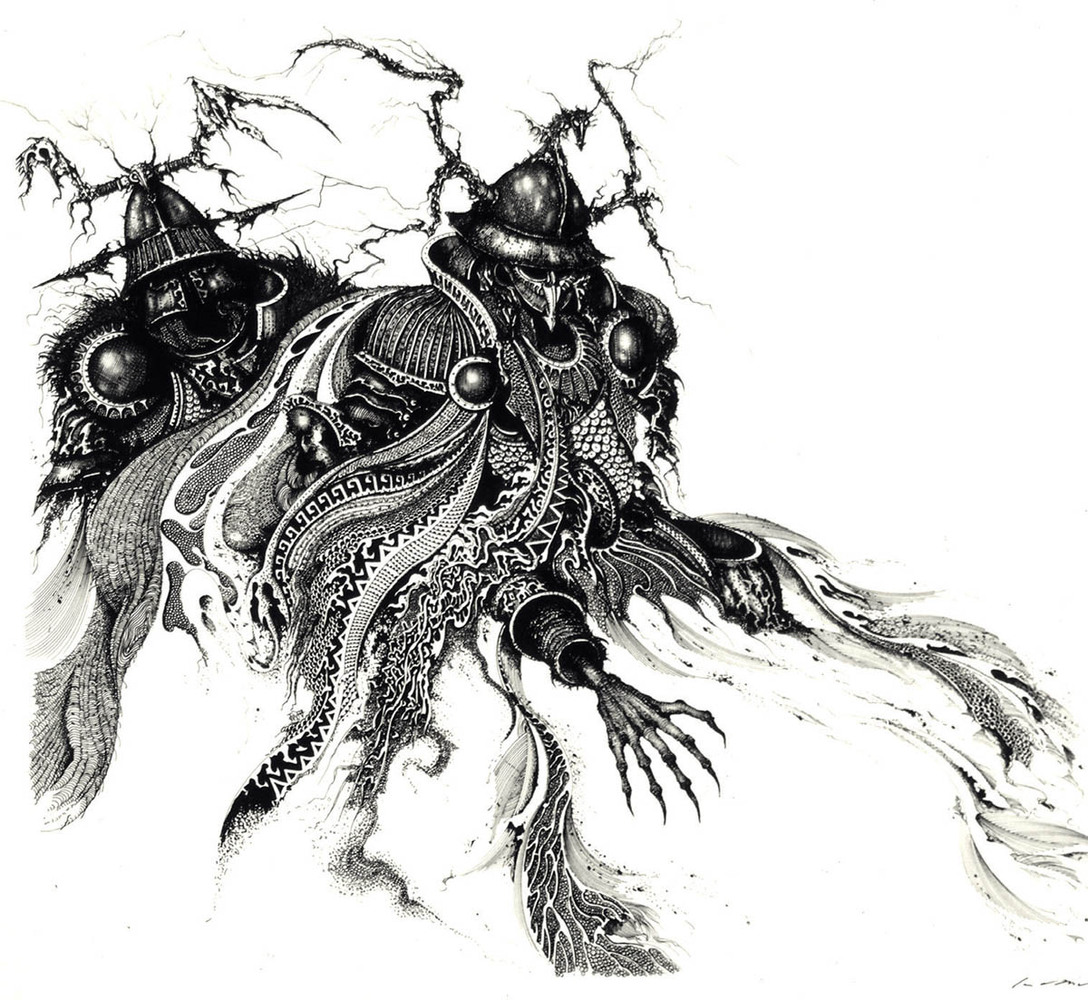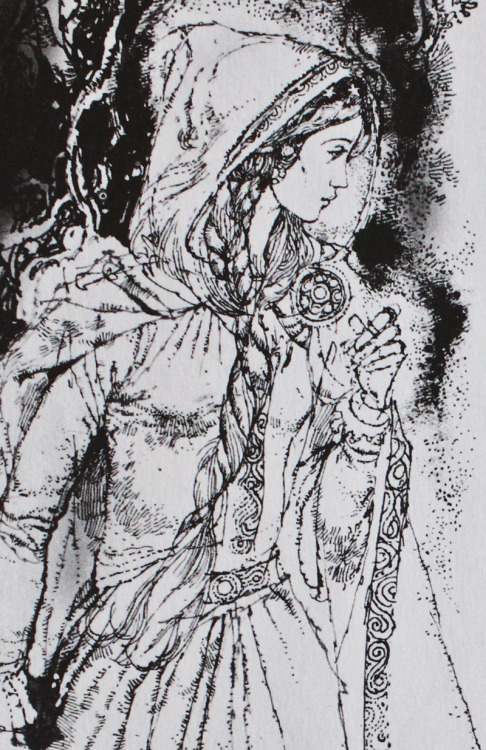Octo Kwan is a Hong Kong Chinese artist with a particular interest in the work of J.R.R. Tolkien whose work has been printed in the Beyond Bree calendars as well as in UK Tolkien Society publications. Now he has his own art book, which introduces us to a new world of art inspired by Tolkien. It is a handsome production, well made and well printed, with good-quality paper.
The books introductory texts contain a good deal of interesting and useful information on Octo Kwan and on the growing interest in J.R.R. Tolkiens writings within the Chinese cultural sphere. These text sections are bilingual in English and Chinese. I am not literate in Chinese, but having once worked for Edinburgh University Library, which has one of Britains best collections of Chinese books, I will venture some comment. So, to an ex-librarian who well remembers the difficulties of comparing block capital book requests with artistic grass script fonts on covers, the Chinese text in this book seems clean, modern and highly legible. It does have a flavour of the very old seal script style about it; so perhaps the correct western comparison might be Gill Sans, as a modern yet classically inspired and balanced font
The English and Chinese text sections are balanced on pages and within the book so that the overall production is not down-weighed by either and looks good overall. The translation is not quite idiomatic English, but it is clear, smooth and mostly free of obvious mistakes; the few which remain are not of any significance.
Octo Kwan is a trained artist, and also a writer who has produced his own translation of The Lord of the Rings. In this work which he hopes to see published one day he has followed Tolkien own indications in the Apendices to The Lord of the Rings, and paid much more attention to the linguistics of the work than the current Chinese translations do. This thorough exploration of Tolkiens world is reflected in Octo Kwans artwork, albeit in an anime style which many of us in the West are unfamiliar with in this area. It is easy to underestimate these images, as at a first glance they often look cartoonish. Behind the seemingly simple style, though, is a great deal of skill and thought, a real knowledge of Tolkiens work, and often a delightful sense of humour.
Although the books title references only The Hobbit, it contains works inspired by that book, by The Lord of the Rings, and by The Silmarillion, as well as a section Just for Fun. Pictures of characters such as Faramir and Galadriel reveal a fresh vision and light touch; unusual subjects such as Luthiens Dance before Morgoth are tackled as well as such staples as The Bridge of Khazad-Dum. Some of the black-and-white work is just as good as the colour pieces, and the use of simultaneous narrative in page layout in, for example, A Knife in the Dark, is fine. At the lighter end, I know of few parody pieces as genuinely funny as Octos The Fellowship of the Ring in Hong Kong.
There is something else about Octo Kwans work which becomes clear on seeing this book. In his art, J.R.R. Tolkiens writings and the long traditions of Chinese art meet and adapt to each other. Octo Kwans Galadriel is not just the fairy of many a modern animation serial; she carries echoes of eldritch Ladies all the way back to Gu Kaizhi and the Nymph of the Lo River (4th/5th century; Tang Dynasty).
Since Octo Kwan has an unusual knowledge of Tolkiens writings, his imagery raises an interesting question. Is he just using Hong Kong staple images or is his imagery as thought-through as his writing? I will cheerfully admit that when it comes to East Asian art, I am more used to Guo Xis landscapes and Hiroshiges prints than modern anime. Octo Kwans work seems to me to have recognizably Chinese features. So is there a Chinese fictional translation matching Tolkiens own work in Appendix F underlying it? What seems to me to be the Manchu look of Theoden suggests that might be the case. I hope so, since the book makes it clear that there is new and growing interest in Tolkien in the Chinese cultural sphere. It is good to see Octo Kwans fresh vision; it will be good to see more innovative artistic responses to Tolkiens writing that emerge from the leaf-mould of this new habitat, rather than just copying Western ideas.
This will not be an easy book to get hold of, but for anyone with a serious interest in art inspired by Tolkiens writings, it is an unusual and rewarding work. I for one hope that we will see much more work by this most intriguing artist in years to come.





































